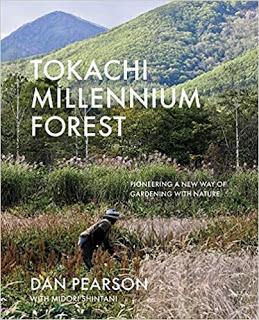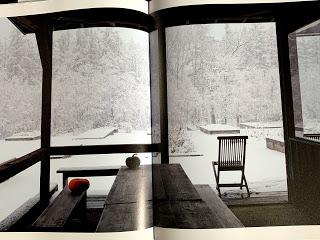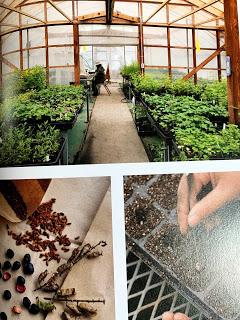It is now two years since I went to the Beth Chatto Symposium which I still think of as one of the best garden related events I have ever attended. It was inspiring and informative and one of the talks that really set me alight with fascination was the talk by Dan Pearson and Midori Shintani about the Tokachi Millennium Forest in Hokkaido. Such was the impact on me of this talk that I remarked at the time that I looked for a book on this subject as I wanted to know more but could not find one. Fast forward to now and I receive an email 'would you like to review this new book?' the answer could not have been yes fast enough. I have not paid for this book and I am not being paid to write this review. My words and opinions are my own.

This is a book that needs reading. That might sound obvious, but some books are more about the pictures than the words, for me this book was the best combination of both. I cannot sum it up better than Fergus Garrett's closing sentence in the forward "The story is beautifully articulated in Dan and Midori's words and emotionally conveyed in exceptional photos, making this a most stimulating and intelligent book" (1) It is indeed an intelligent book: it is one to make you think and consider.
The land for the Forest was purchased Mitsushige Hayashi to offset the carbon footprint of his newspaper business. This is not a tokenistic gesture, there are over 988 acres of land developed for this Forest. I think one of the things that struck me most about this book is that this is so much more than a design project. This Forest is wound into and grown from deep within the history and culture of Hokkaido. I found myself googling things mentioned constantly as I read as I needed to understand more, understand deeper. The more you read the more in depth you go.
The more you read the more the scale of what has and is being achieved the more astounding it becomes. This is a project that is about having and accomplishing vision. This is a project for generations to come to enjoy.

The photographs in this book are many and are as informative as they are beautiful. They evoke the sense of space and time as you move through the areas and the seasons.

They also give insight into the painstaking detail that is behind a design that looks natural yet is the product of so much work. Nothing that looks so effortless is ever the product of no effort. This is not a garden that happens by magic, there are many hands making this happen.
The scale of the project is immense. The forest is divided into several garden areas including a Meadow Garden, Earth Garden, Forest Garden, there is farming, a show garden and a kitchen garden. They all have their own distinct characteristics and are designed to complement the natural landscape and to preserve this area from being built on and developed further. This is not just something to look at, there are animals living here and people making their living. It is a vast interconnected community.
I like that the book explains the climate and geographical landscape of the area and also about nature worship in Japanese culture. You need this context to understand what this forest is about. Dan explains how much of Japan is very urbanised and that sometimes people need to be reminded and reintroduced to nature and natural spaces. This struck quite a chord with me after the recent lockdown months when many people started walking around their local areas for the first time and discovering the restorative benefits of connecting with nature. I also thought about the impact on our national parks with the increased numbers of day visitors and the lack of understanding and respect many have shown for nature. This project is about a balance that we also need to create/restore here in the UK.
In the final pages of the book Dan links back what he has learned from the Forest project with what he wanted to achieve with his own garden in Somerset. Dan's garden is worked intensively where it needs to be but also aims to be a 'light touch' on the landscape. It is both developed and yet sensitive with its surroundings. The blurring of where the boundaries are is a masterclass in borrowed landscape (Shakkei is the Japanese principle of the 'borrowed view'). This is central to the Forest project and to this piece of Somerset Dan calls home. What I like most about this section is that it demonstrates how we can take these huge ideas and yet think about how we can apply them to our own spaces. Admittedly I look out at my garden with its fences and neighbours, yet I also have a Wild Garden where I try to let nature be (with a bit of help). Maybe it is within these small spaces we too can make a difference.
This book made me think, the more I read of it the more it makes me think. I can only dream of ever visiting the Tokachi Millennium Forest in reality so having this book is the closest I will get to it. I found the same excitement and inspiration in this book as I did when I listened to Dan and Midori speaking about it two years ago. I know I will be re-reading this book for a long time to come.

